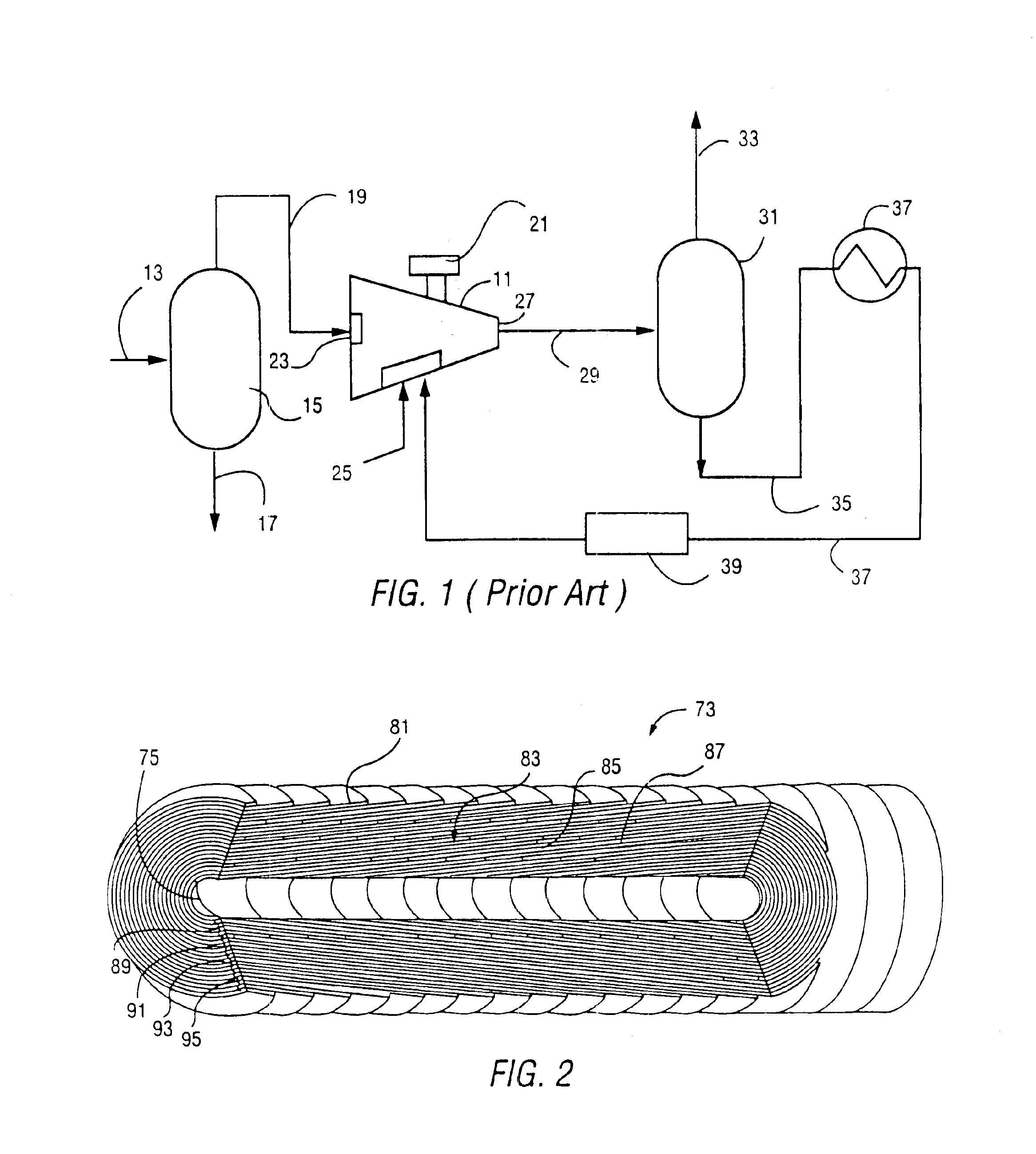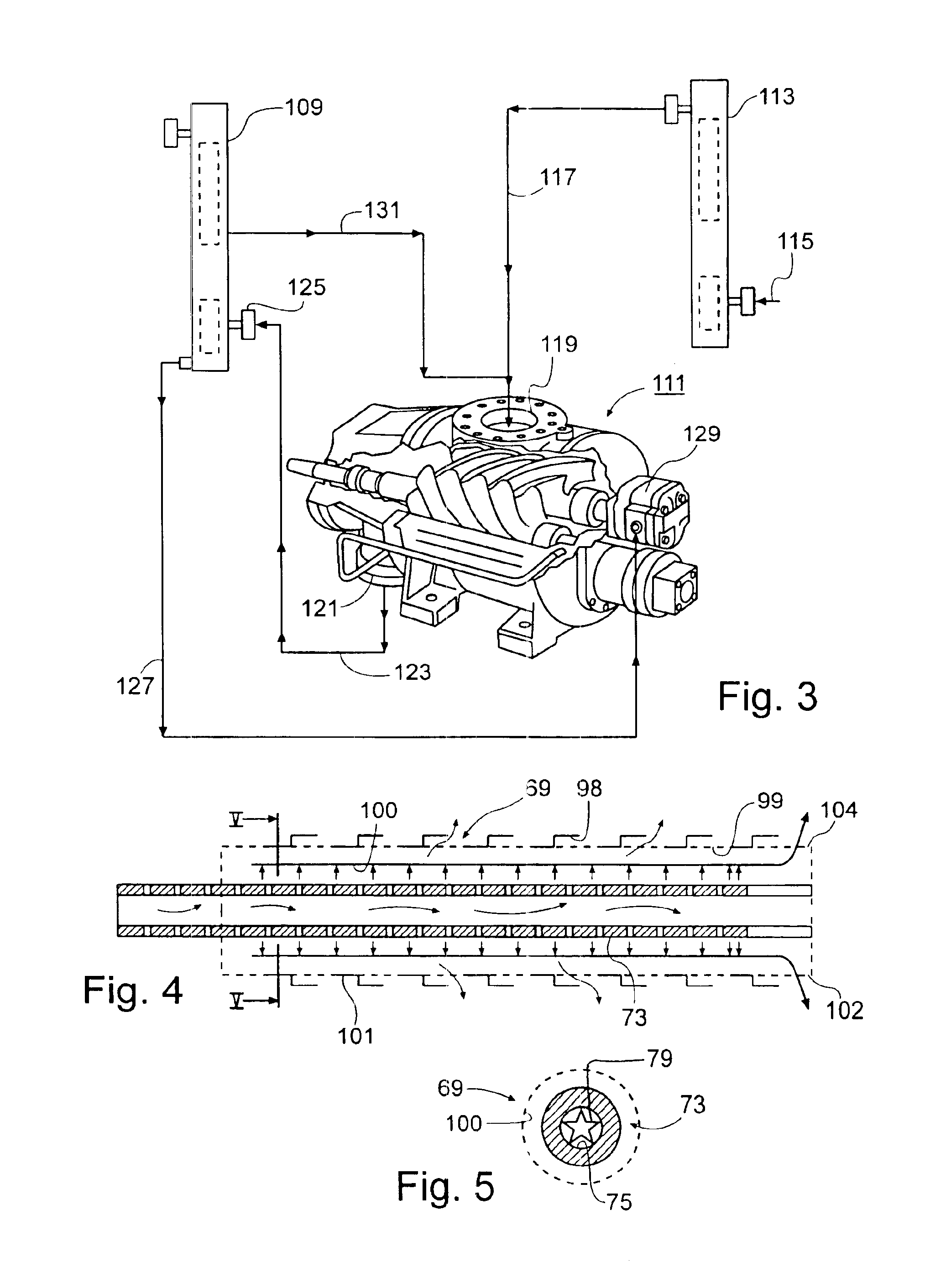Filtration vessel and method for rotary gas compressor system
a technology of rotary compressor and filtration vessel, which is applied in the direction of machine/engine, liquid fuel engine, separation process, etc., can solve the problems of excessive and continuous loss of lube oil, difficult particular applications, and high maintenance costs, and achieves the effect of convenient separation of bulk liquid and more uniform gas flow
- Summary
- Abstract
- Description
- Claims
- Application Information
AI Technical Summary
Benefits of technology
Problems solved by technology
Method used
Image
Examples
Embodiment Construction
FIG. 1 shows, in simplified schematic fashion, a prior art gas compression process and compressor system utilizing a rotary screw gas compressor 11. The compressor 11 is a conventional oil flooded rotary screw compressor as will be familiar to those skilled in the industry.
A raw gas feed stream 13 from a natural gas well or other source is supplied to a scrubber 15 for separating fluids and entrained solids from the raw gas stream 13. The scrubber 15 may be any conventional two or three phase separator which discharges a liquid stream 17 to a disposal reservoir and an essentially dry, low pressure gas stream 19 to the compressor 11. A portion of the gas stream may also be used to power the prime mover 21 which is used to power the compressor 11. However, a variety of other types of engines or electric motors may also be used to drive the compressor 11.
The compressor 11 receives the low pressure gas through an inlet port 23. A suitable lubricant is supplied to the inside of the casin...
PUM
| Property | Measurement | Unit |
|---|---|---|
| diameter | aaaaa | aaaaa |
| height | aaaaa | aaaaa |
| centrifugal force | aaaaa | aaaaa |
Abstract
Description
Claims
Application Information
 Login to View More
Login to View More - R&D
- Intellectual Property
- Life Sciences
- Materials
- Tech Scout
- Unparalleled Data Quality
- Higher Quality Content
- 60% Fewer Hallucinations
Browse by: Latest US Patents, China's latest patents, Technical Efficacy Thesaurus, Application Domain, Technology Topic, Popular Technical Reports.
© 2025 PatSnap. All rights reserved.Legal|Privacy policy|Modern Slavery Act Transparency Statement|Sitemap|About US| Contact US: help@patsnap.com



